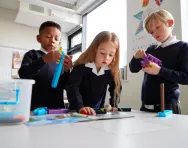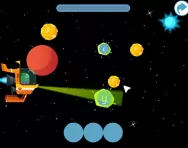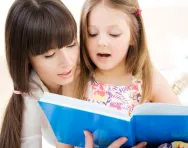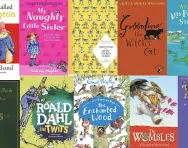Important update from TheSchoolRun
For the past 13 years, TheSchoolRun has been run by a small team of mums working from home, dedicated to providing quality educational resources to primary school parents. Unfortunately, rising supplier costs and falling revenue have made it impossible for us to continue operating, and we’ve had to make the difficult decision to close. The good news: We’ve arranged for another educational provider to take over many of our resources. These will be hosted on a new portal, where the content will be updated and expanded to support your child’s learning.
What this means for subscribers:
- Your subscription is still active, and for now, you can keep using the website as normal — just log in with your usual details to access all our articles and resources*.
- In a few months, all resources will move to the new portal. You’ll continue to have access there until your subscription ends. We’ll send you full details nearer the time.
- As a thank you for your support, we’ll also be sending you 16 primary school eBooks (worth £108.84) to download and keep.
A few changes to be aware of:
- The Learning Journey weekly email has ended, but your child’s plan will still be updated on your dashboard each Monday. Just log in to see the recommended worksheets.
- The 11+ weekly emails have now ended. We sent you all the remaining emails in the series at the end of March — please check your inbox (and spam folder) if you haven’t seen them. You can also follow the full programme here: 11+ Learning Journey.
If you have any questions, please contact us at [email protected]. Thank you for being part of our journey it’s been a privilege to support your family’s learning.
*If you need to reset your password, it will still work as usual. Please check your spam folder if the reset email doesn’t appear in your inbox.
Age-related expectations: KS1
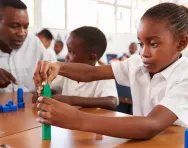
It can be hard to work out whether your child’s learning is on track for their age – especially if their standard answer, when you ask about their day, is, ‘I can’t remember!’
The Department for Education (DfE) administers SATs in reading and maths at the end of Year 2. These, along with teacher assessment in writing and science, determine whether your child is meeting age-related expectations: the expected standard for their age group.
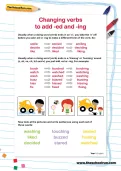
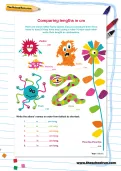
Start the Year 1 Learning Programme!
- Weekly maths & English worksheets direct to your inbox
- Follows the National Curriculum
- Keeps your child's learning on track
To meet age-related expectations, your child needs to score between 100 and 115 in their SATs – but you may not be told their actual scores. It’s more likely that their end-of-year report will be based on both their SATs results and teacher assessments, and reported as ‘working towards’ age-related expectations (or ARE), ‘working at,’ or ‘working beyond.’
Here’s what your child needs to do to meet age-related expectations in each core curriculum area.
KS1 English reading age-related expectations
- Read accurately most words of two or more syllables.
- Read most words containing common suffixes.
- Read most common exception words.
- In age-appropriate books, read most words accurately without overt sounding and blending, and sufficiently fluently to allow them to focus on their understanding rather than on decoding individual words.
- Sound out most unfamiliar words accurately, without undue hesitation.
- In a book that they can already read fluently, check it makes sense to them, correcting any inaccurate reading.
- Answer questions and make some inferences.
- Explain what has happened so far in what they have read.
KS1 English writing age-related expectations
- Write simple, coherent narratives about personal experiences and those of others (real or fictional).
- Write about real events, recording these simply and clearly.
- Demarcate most sentences in their writing with capital letters and full stops, and use question marks correctly when required.
- Use present and past tense mostly correctly and consistently.
- Use coordination (e.g. or/and/but) and some subordination (e.g. when/if/that/because) to join clauses.
- Segment spoken words into phonemes and represent these by graphemes, spelling many of these words correctly and making phonically plausible attempts at others.
- Spell many common exception words.
- Form capital letters and digits of the correct size, orientation and relationship to one another and to lower-case letters.
- Use spacing between words that reflects the size of the letters.
KS1 maths age-related expectations
- Read scales in divisions of ones, twos, fives and tens.
- Partition any two-digit number into different combinations of tens and ones, explaining their thinking verbally, in pictures or using apparatus.
- Add and subtract any two 2-digit numbers using an efficient strategy, explaining their method verbally, in pictures or using apparatus.
- Recall all number bonds to and within 10 and use these to reason with and calculate bonds to and within 20.
- Recall multiplication and division facts for 2, 5 and 10 and use them to solve simple problems.
- Identify fractions of a number or shape, and know that all parts must be equal parts of the whole.
- Use different coins to make the same amount.
- Read the time on a clock to the nearest 15 minutes.
- Name and describe properties of 2D and 3D shapes, including number of sides, vertices, edges, faces and lines of symmetry.
KS1 Science age-related expectations
- Working scientifically, ask questions about what they notice.
- Use different types of scientific enquiry to gather and record data, using simple equipment where appropriate, to answer questions.
- Observe changes over time.
- Notice patterns.
- Group and classify things.
- Carry out simple comparative tests.
- Find things out using secondary sources of information.
- Communicate their ideas, what they do and what they find out in a variety of ways.
- Name and locate parts of the human body, including those related to the senses, and describe the importance of exercise, a balanced diet and hygiene for humans.
- Describe the basic needs of animals for survival and the main changes as young animals, including humans, grow into adults.
- Describe the basic needs of plants for survival and the impact of changing these, and the main changes as seeds and bulbs grow into mature plants.
- Identify whether things are alive, dead or have never lived.
- Describe and compare the observable features of animals from a range of groups.
- Group animals according to what they eat, describe how animals get their food from other animals and/or from plants, and use simple food chains to describe these relationships.
- Describe seasonal changes.
- Name different plants and animals and describe how they are suited to different habitats.
- Distinguish objects from materials, describe their properties, identify and group everyday materials and compare their suitability for different uses.
